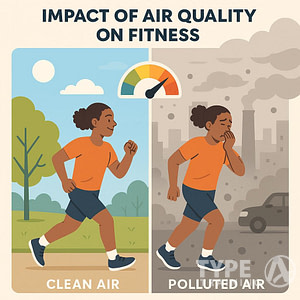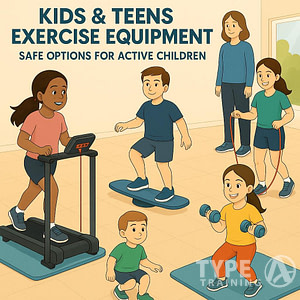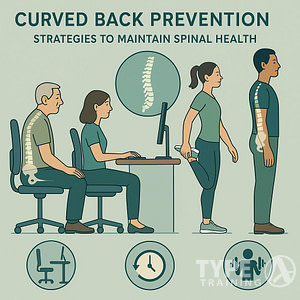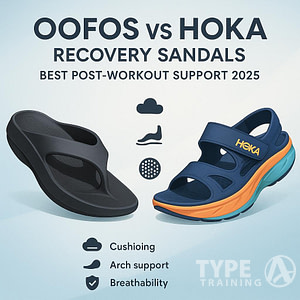Sparkling water has become a popular alternative to sugary drinks. It offers a refreshing and flavorful option for those seeking healthier beverages. However, recent concerns have emerged regarding the presence of per- and polyfluoralkyl substances (PFAS) in some sparkling water brands. These chemicals, often referred to as “forever chemicals,” have raised questions about the safety of consuming these bubbly drinks.
PFAS are synthetic compounds used in various industries and products, known for their ability to repel water and oil. While they offer certain benefits in manufacturing, their persistence in the environment and potential health effects have led to increased scrutiny. As you consider your beverage choices, it’s important to understand the presence of PFAS in sparkling water and what it means for your health.
Key Takeaways
- PFAS are synthetic chemicals found in some sparkling water brands
- These substances may pose potential health risks if consumed in large amounts
- Understanding PFAS levels can help you make informed decisions about sparkling water consumption
What Are These Forever Chemicals in Your Drinks?
Popular posts:
PFAS, or per- and polyfluoroalkyl substances, are a vast group of synthetic chemicals that have been around since the 1940s. You might be surprised to learn there are over 15,000 known PFAS chemicals today. These aren’t natural substances – they’re entirely man-made.
What makes PFAS unique is their incredible resistance to breakdown. Natural processes that typically degrade other chemicals simply don’t work on PFAS. This is why they’ve earned the nickname “forever chemicals.” They don’t disappear; they just move from place to place, spreading across the globe.
You’ll find PFAS in many products you use daily, including sparkling water, non-stick cookware, and waterproof clothing. They primarily get into these drinks through the water used to make them. PFAS can dissolve slightly in water, allowing them to travel through streams, rivers, and oceans. They can also linger in air and soil, eventually making their way into food and drink.
Here’s a startling fact: an estimated 45% of U.S. drinking water may contain one or more PFAS chemicals. While beverage manufacturers filter their water, not all filters can remove PFAS effectively.
PFAS contamination doesn’t stop at the water source. The manufacturing equipment used to produce sparkling waters can also introduce these chemicals. PFAS have been commonly used in machine parts for years, potentially contaminating any food or drink made on these production lines.
Even the packaging of your favorite sparkling water might contain PFAS. These chemicals can migrate from the packaging into the beverage itself.
To help you understand the widespread nature of PFAS, here’s a quick overview:
| Where PFAS Are Found | Examples |
|---|---|
| Consumer Products | Sparkling water, non-stick cookware, waterproof clothing |
| Industrial Uses | Firefighting foam, electronics manufacturing |
| Environment | Drinking water, soil, air |
Remember, while PFAS are widespread, ongoing research and regulations aim to reduce their prevalence in consumer products and the environment. Being aware of their presence is the first step in making informed choices about the products you consume.
Health Risks Associated with PFAS Exposure
PFAS exposure may pose several health risks, though research is still ongoing. You should be aware of potential effects on your cholesterol levels and liver function. Pregnant individuals might face increased risks of hypertension, gestational diabetes, and preeclampsia. PFAS could also lead to lower birth weights in infants.
Cancer risks are a concern, particularly for kidney and testicular cancers. Your immune system may also be affected, potentially resulting in reduced vaccine effectiveness.
PFAS might disrupt your:
- Immune function
- Endocrine system
- Reproductive health
- Metabolic processes
It’s important to note that scientists have only studied a small fraction of known PFAS chemicals. Most research has been conducted on animals or through statistical analyses due to ethical constraints on human studies. This limited knowledge base means we’re still uncovering the full scope of PFAS health impacts.
The effects of PFAS extend beyond human health, posing risks to wildlife and ecosystems due to their toxic properties.
PFAS levels in popular sparkling waters
You might be surprised to learn that your favorite fizzy drink could contain unwanted chemicals. Many popular sparkling water brands have been found to contain per- and polyfluoroalkyl substances (PFAS). These chemicals can persist in the environment and potentially impact human health.
A recent study examined PFAS levels in various carbonated water products. The results showed that 11 out of 12 tested sparkling waters contained detectable amounts of PFAS. While regulatory bodies have set safety limits, some advocacy groups recommend even lower thresholds.
Here’s a breakdown of PFAS concentrations found in some well-known brands:
- Topo Chico Natural Mineral Water: 9.76 ppt
- Polar Natural Seltzer Water: 6.41 ppt
- Bubly Blackberry Sparkling Water: 2.24 ppt
- Poland Spring Zesty Lime Sparkling Water: 1.66 ppt
- Canada Dry Lemon Lime Sparkling Seltzer Water: 1.24 ppt
- La Croix Natural Sparkling Water: 1.16 ppt
- Perrier Natural Sparkling Mineral Water: 1.1 ppt
It’s worth noting that Topo Chico has since reduced its PFAS levels by about half. If you’re concerned about PFAS in your sparkling water, you might consider alternatives like Sound or Mountain Valley Sparkling Water, which report zero PFAS levels. Staying informed about what’s in your beverages can help you make choices aligned with your health priorities. (source)
Which Sparkling Water Brands Are Lowest in PFAS?
If you’re feeling concerned, don’t worry. There are still many widely available sparkling water brands with less than one to zero ppt of PFAS detected.
- San Pellegrino: PFAS (0.31 ppt)
- Spindrift: PFAS (0.19 ppt)
- Sound: Made with reverse osmosis water, which helps filter out PFAS
- Nixie: Made with reverse osmosis water
- Aura Bora: Made with reverse osmosis water
- Mountain Valley: PFAS not detected
- Sparkling Ice: PFAS not detected
These brands are known for their low to non-existent PFAS levels, making them safer choices for your sparkling water needs (source, source).
Is Sparkling Water a Safe Beverage Choice?
Sparkling water enthusiasts need not worry excessively about their favorite fizzy drinks. While concerns about PFAS in some brands have arisen, you have several options to enjoy carbonated water safely.
Some sparkling water brands contain lower PFAS levels than others. For example, certain varieties from Schweppes, Dasani, San Pellegrino, Spindrift, and Sparkling Ice have shown minimal or undetectable PFAS content in recent testing.
If you want to eliminate PFAS concerns entirely, consider making your own sparkling water at home. Here’s how:
- Invest in a certified water filter that specifically removes PFAS
- Look for filters with certification seals from reputable organizations like NSF or the Water Quality Association
- Use an at-home sparkling water maker to carbonate your filtered water
This approach gives you complete control over your sparkling water’s quality and safety. You can enjoy your favorite fizzy drinks without worrying about potential contaminants.
Water quality standards for bottled and tap water can vary. If you’re concerned about your drinking water, consider having it tested or installing a whole-house filtration system. These steps can help ensure all the water you consume – sparkling or still – meets high safety standards.
The future of sparkling water safety
Improvements in PFAS regulation are on the horizon. The U.S. Environmental Protection Agency is taking steps to address PFAS in drinking water systems. This initiative will likely lead to reduced PFAS levels in the water used for sparkling beverages.
While some popular brands currently contain PFAS, you have options to enjoy sparkling water safely:
- Choose brands with lower PFAS levels
- Make your own sparkling water at home
- Stay informed about product testing results
By making conscious choices, you can support companies prioritizing safety and ethical practices in their product development.
Here’s a quick guide to help you make informed decisions:
| Action | Benefit |
|---|---|
| Read labels carefully | Avoid artificial additives |
| Research brand practices | Support responsible companies |
| Use home carbonation systems | Control water source quality |
| Stay updated on regulations | Make choices based on latest standards |
Keep in mind that regulations and testing methods are evolving. Stay informed about updates from health authorities and environmental groups to make the best choices for your health and well-being.
Common Questions About PFAS in Sparkling Water
Is sparkling water with PFAS safe to drink?
The safety of sparkling water containing PFAS is a complex issue. While low levels may not pose immediate health risks, long-term exposure to PFAS can potentially lead to health concerns. Regulatory bodies are still evaluating safe consumption levels. If you’re concerned, consider opting for brands that have been tested and confirmed to be PFAS-free.
How much PFAS is in popular fizzy water brands?
PFAS levels vary among sparkling water brands. Topo Chico Natural Mineral Water has been found to contain 9.76 parts per trillion (ppt) of PFAS, while Polar Natural Seltzer Water showed 6.41 ppt. It’s important to note that these levels are below the EPA’s current health advisory levels, but research on safe PFAS limits is ongoing.
Which bubbly waters don’t have PFAS?
Many sparkling water brands have not been extensively tested for PFAS. However, some companies are proactively addressing this concern.
Look for brands that explicitly state they are PFAS-free on their labels or websites. Additionally, sparkling waters filtered through reverse osmosis or activated carbon are more likely to have reduced PFAS levels.
How can you find sparkling waters without PFAS?
To identify PFAS-free sparkling waters:
- Check product labels for “PFAS-free” claims
- Research brands that use advanced filtration methods
- Contact manufacturers directly for PFAS testing information
- Look for third-party certifications for water purity
- Stay informed about independent testing results published by consumer advocacy groups
What health effects might PFAS in sparkling water cause?
While research is ongoing, potential health impacts of PFAS exposure may include:
- Liver damage
- Thyroid disruption
- Increased cholesterol levels
- Weakened immune system
- Certain types of cancer
It’s important to remember that these effects are typically associated with long-term, high-level exposure. The risk from occasional consumption of sparkling water with low PFAS levels is likely minimal.
Any new studies on PFAS in bottled fizzy water?
Recent studies on PFAS in bottled sparkling water are limited.
However, independent research continues. You should stay updated on new findings from reputable scientific sources and regulatory agencies.













